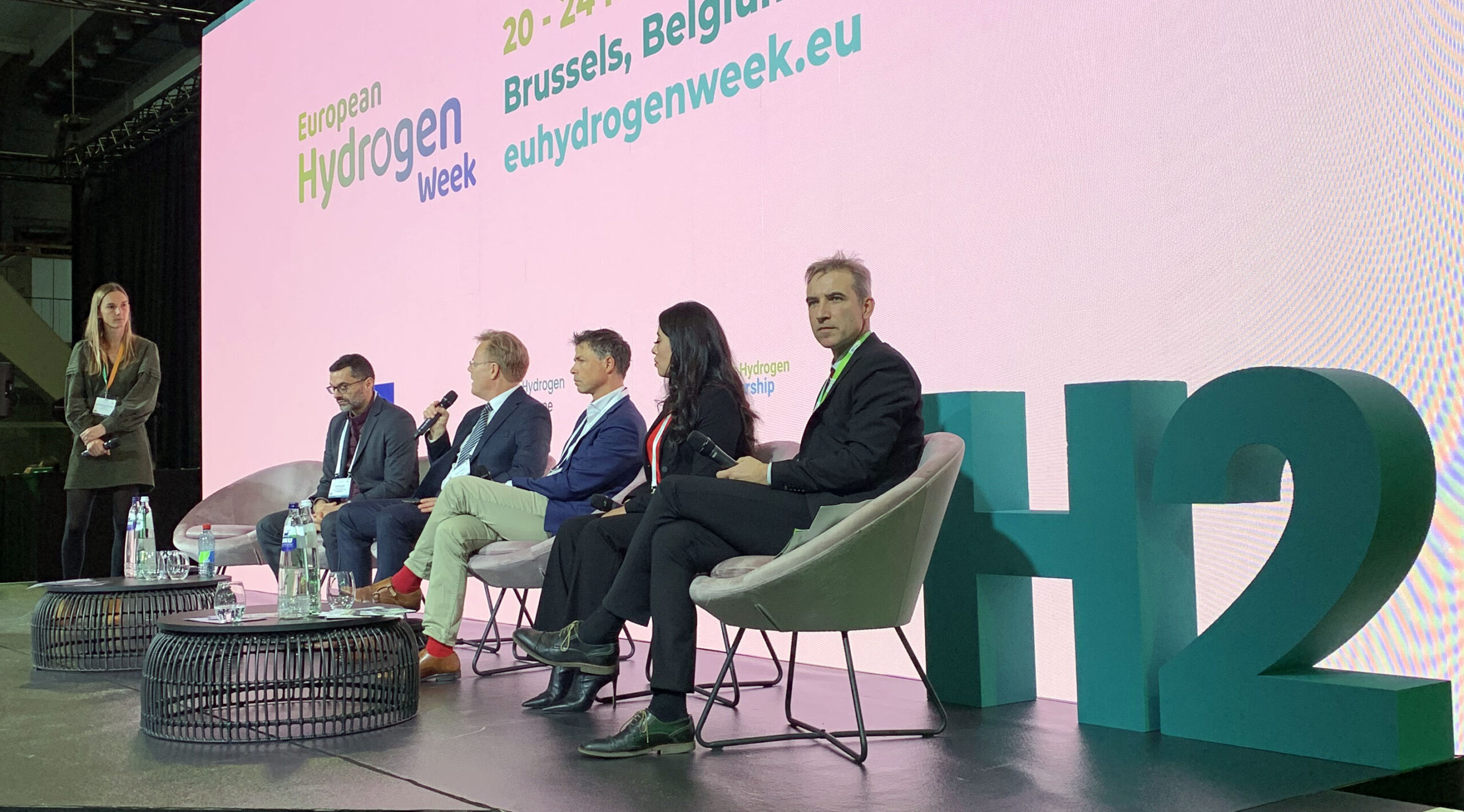The European Hydrogen Week kicks off in Brussels from 18 – 22 November 2024 and the International PtX Hub will be contributing to the programme. It is a pivotal event where global leaders, innovators, policymakers, and technology experts will come together to shape the future of green hydrogen and renewable energy. As official supporter of the The European Hydrogen Week, the International PtX Hub will be hosting and co-hosting several high-level side events.
Tuesday, 19.11.2024
Catalysing Private Sector Involvement in Morocco’s Green Hydrogen Revolution
The Side event will present the pathways for investors and partners to engage on H2 projects in Morocco. Room: 1121 (Hall 11 – 2nd Floor), Time: 09:45-10:45 CET.
India’s Green Hydrogen Path
Explore India’s green hydrogen developments, investment opportunities, and its journey toward becoming a global leader in renewable hydrogen. India is the exclusive partner of the EHW this year. The event will be opened by H.E. Shri Prashant Kumar Singh, Secretary, Ministry of New and Renewable Energy. Room: 1121 (Hall 11 – 2nd Floor); Time: 11:00-12:30 CET).
Wednesday, 20.11.2024
Algeria as a Major PtX Partner to the EU
A deep dive into Algeria’s role in the global hydrogen market, focusing on its ambitions to export renewable hydrogen to the EU. Discussions will cover PtX pilot projects, strategies, and challenges. Room: 1121 (Hall 11 – 2nd Floor), Time: 10:00-11:10 CET.
Investing in Ukraine’s Hydrogen Future
Focused on financing and de-risking strategies to support Ukraine’s hydrogen sector and energy transition. In the event, the Federal Ministry for Economic Affairs and Climate Protection and the H2Uppp programme of GIZ will kickstart a public private cooperation with N1Capital for the feed-in of green hydrogen into the Central European Hydrogen Corridor. Room: 1121 (Hall 11 – 2nd Floor), Time: 11:30-13:00 CET.
SAF targets. ☑ check! Now, where is the boom?
Discussing the challenges and opportunities of hydrogen-based aviation fuels (e-SAF), with a focus on regulatory frameworks and Europe’s leadership in this emerging technology. Room: 1124 (Hall 11 – 2nd Floor), Time: 14:00-15:00 CET.
Navigating CBAM and Policy Challenges in Green Hydrogen Trade
A strategic discussion on the EU’s Carbon Border Adjustment Mechanism (CBAM) and its implications for the global hydrogen market. Room: 1124 (Hall 11 – 2nd Floor), Time: 15:15-16:45 CET.
Pathways to financing hydrogen projects in emerging markets GET.invest focuses on solutions to finance large-scale renewable energy and green hydrogen projects in developing countries and emerging economies. Room: 1124 (Hall 11 – 2nd Floor), Time: 17:00-18:00 CET.
For more information on the side events, speakers and key notes check the organiser’s webpage Side Events – European Hydrogen Week
